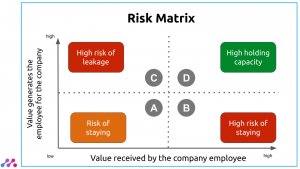TEN WAYS TO MOTIVATE EMPLOYEES
The surprising truth of what motivates us
The book "The Surprising Truth of What Motivates Us" by Daniel H. Pink is an exploration of what really motivates people in the workplace. The author argues that traditional incentives, such as money and promotions, are insufficient to motivate employees in the long term. His conclusion is that there are three factors that really drive achievement and performance: autonomy, mastery, and purpose.
Autonomy refers to having control over our own time and our own decisions, which is essential to maintaining intrinsic motivation. Mastery refers to having the opportunity to improve and develop our skills, which is essential to maintaining a sense of purpose and achievement. Lastly, purpose refers to working on something that has meaning and a positive impact on the world.
The book also argues that leaders and organizations must adapt to these changes in human motivations and provide opportunities for autonomy, mastery, and purpose in the workplace. Reading it led me to reflect on what would be the main ways a manager can motivate his collaborators.

Extrinsic motivation and intrinsic motivation.
When we talk about motivation, this is the first distinction we must make. Extrinsic motivation refers to motivation that comes from factors external to the individual, such as rewards (eg money, promotions, recognition) or consequences (eg punishments or sanctions). It is based on the idea that individuals perform a task or activity to obtain a reward or avoid punishment.
On the other hand, intrinsic motivation refers to motivation that comes from within the individual, such as the interest, pleasure, or satisfaction one derives from performing a task or activity. It is based on the idea that individuals perform a task or activity because they like it or it matters to them.
In short, extrinsic motivation is motivation that comes from external factors, such as rewards or punishments, while intrinsic motivation is motivation that comes from internal factors, such as interest or satisfaction from performing a task or activity.
In a company, both intrinsic and extrinsic motivations have their advantages and disadvantages. Intrinsic motivation is generally considered more effective in the long term, as it is based on the employee's interest and passion for their work, which can lead to higher performance and commitment. Intrinsically motivated employees are less likely to look for another job and are more committed to the company.
On the other hand, extrinsic motivation can be effective in the short term, as it can provide immediate rewards for desired performance. However, if rewards are not perceived as fair or valuable, or if they are not provided frequently enough, they may lose their effectiveness.
In summary, it is important to note that intrinsic and extrinsic motivation are not mutually exclusive and complement each other. A proper mix of both can be the best way to motivate employees and ensure high performance and engagement.
How to motivate my employees?
There are several ways to effectively motivate employees, some of the most effective are:
- Set clear and achievable goals: Set clear and achievable goals for employees, as this provides them with a sense of purpose and allows them to measure their progress.
- Recognition and rewards: Recognize and reward good performance by employees, as this gives them a sense of accomplishment and motivates them to continue working hard.
- Open and transparent communication: Maintain open and transparent communication with employees, as this allows them to better understand their roles and responsibilities, as well as the goals and objectives of the company.
- Career Development: Provide career development opportunities for employees, as this allows them to grow and progress in their career.
- Workplace flexibility: Provide flexibility in the workplace, such as flexible work hours or telecommuting, as this allows employees to
- Provide autonomy: Allowing employees to have control over their work and their decisions, as this gives them a sense of autonomy and allows them to feel more involved in their work.
- Offer learning opportunities: Provide opportunities for employees to learn and develop their skills, as this allows them to feel a sense of achievement and progress in their career.
- Encourage teamwork: Encourage teamwork and collaboration among employees, as this allows them to feel a sense of belonging and contribution to the team.
- Provide a purpose: Provide a clear and meaningful purpose behind the work that is done, as this allows them to feel that their work has a positive impact on the world.
- Offer a positive work environment: Design a workspace that encourages collaboration and creativity, as well as formulas that increase the levels of interaction and 'good vibes' among collaborators.
This is what you can do as a leader to motivate your collaborators. In any case, the most important thing is your attitude towards them. Because, according to the phrase attributed to Tom Peters, 'People don't leave companies, they leave bosses'
Ricardo Alfaro
COMBATING THE BUREAUCRACY IN THE COMPANY
Many large organizations increase their levels of internal bureaucracy and end up creating 'specially designed' procedures to satisfy the internal desires for control and security of their front lines. In this article I give you some clues about what incremental bureaucracy is and how to combat it.
Bureaucracy: a 19th century technology
The corporate bureaucracy has not always been a pernicious or pathological element. When it was created by organizational engineer Frederick Winslow Taylor, it made sense. It was the 19th century and companies had a series of characteristics:
- Most of the workers were illiterate.
- Managerial powers were scarce
- Information was difficult to obtain
- Change was gradual or linear
Although these circumstances no longer exist today, we are witnessing the phenomenon in which many organizations, as they grow, have more employees, increase their levels of internal bureaucracy, and there comes a time when these grow more than the business, producing the phenomenon called incremental bureaucracy.

Incremental bureaucracy and organizational arteriosclerosis
In these circumstances it can become a true organizational pathology. If we could assimilate it to a human pathology it would be arteriosclerosis. Let us remember that this disease produces a hardening or lack of flexibility in the arteries that causes a narrowing (sclerosis) of the same and that can progress until the occlusion of the vessel, preventing the flow of blood. In the same way, bureaucracy produces a narrowing of the company's communication, innovation and collaboration channels that prevent talent, the blood of an organization, from flowing.
Why do companies abuse bureaucracy?
There are a few reasons why companies can abuse bureaucracy:
- To control employees: By making rules and procedures too complicated, companies can make it difficult for employees to understand what they are supposed to do and can easily punish them if they don't follow the rules.
- To avoid liability: By adding layers of rules and procedures, companies can make it harder to hold anyone accountable for anything that goes wrong. Many large organizations suffer from high risk aversion. There are many managers afraid of losing their salaries
- To justify the very existence of both individuals and organizational units: Bureaucracies can be self-perpetuating, with employees whose job it is to maintain the bureaucracy rather than to do anything productive. As organizational charts become more extensive, the decision-making process tends to move away from the recipients of the decisions: the customers. The result is that control departments become more powerful and positions, units or committees are created whose purpose is simply to ensure that this bureaucracy exists and, if possible, expands.
Consequences of bureaucratic abuse
If the abuse of bureaucracy is not controlled in companies, it can have a series of negative consequences. It has been confirmed that we can specifically define the following:
- Decreased productivity as a consequence of the slow and gradual increase in the number of rules, regulations and procedures.
- Decreased employee morale and commitment Employees may feel that their work is not valued or that their contributions are not recognized.
- Increase in hierarchy layers and proliferation of C-levels. It is accompanied by an increase in staff teams and accumulation of power in central services.
- Increased complexity of internal processes and multiplication of rules. Interdependencies become more tangled and employees feel confused.
- Increase in the number of KPIs and scorecards. Analysis paralysis appears due to the difficulty of integrating information for decision-making.
- The responsibility is diffused. Committees proliferate so that decision-making is socialized. A large number of issues are escalated to Senior Management.
If you perceive several or all of the above symptoms in your organization, you should analyze whether bureaucracy has become an objective in itself (what I call bureaucratic onanism) or if there is still any possibility of speeding up the development of processes. Also if you are part of the system or have become an outsider of it.
Approach to incremental bureaucracy from the leadership
Almost always a bureaucratic culture starts from the existence of a leadership with a marked bureaucratic character. That leadership is characterized by a focus on rules, procedures, as well as a lack of creativity and flexibility. It's hard to combat because it blurs from top to bottom on the hierarchical ladder. Those managers who do not participate in it become stigmatized characters, too fond of risk, and end up being pushed aside.
And what can be done?
Here are some steps you can take to get rid of that red tape.
- Analyze internal/external processes. You can start by incorporating an opinion survey on the matter, asking your employees about the level of agility of the different processes in the process map (if you don't have it updated, you should start there).
- Carry out process reengineering. Those processes that are critical and that have obtained the worst level of agility must be rethought. Spare no effort in analyzing how things can be done more efficiently.
- Apply technology to gain efficiency. You will realize that those routine tasks can be replaced by technology through RPA (Robotic Process Automation) more easily than you can imagine.
- Develop a change management strategy. This is the most complicated part. Incremental bureaucracy generates a great deal of resistance to change because it puts the focus on those areas of the company that perceive it as a risk. We do not have enough space here to detail all the measures: management of transformation teams, use of agile methodologies to execute the change, appointment of early adopters and their functions, agile communication, etc...
- Use the data to monitor progress. predictive decision making. The new indicators should measure degrees of progress, not static situations. And data should help us make decisions about the future rather than justify the past.
Finally, the steering committee must be a promoter of change. If you don't perceive the pathology and find yourself trapped in the bureaucratic tangle, perhaps it's time to look for alternatives.
Ricardo Alfaro
Other articles by Ricardo Alfaro:
https://managerslab.com/en/how-to-make-a-strategic-plan-in-five-steps/
https://managerslab.com/en/is-the-four-day-work-week-viable/
How to make a strategic plan in five steps
What is a strategic plan
A strategic plan is a document that describes the goals, objectives and strategies of an organization. It can be used to guide organizational operations and decision making.
Preparing a strategic plan is an essential but not an easy task, especially if you are an entrepreneur or business owner of a small and medium business. There is no single methodology on how to create a strategic plan. It will vary depending on the specific industry, business model, and goals of your organization.
However, there are a number of steps you can take to develop a good strategic plan. These steps include conducting a situation analysis, setting goals and objectives, developing strategies, and creating an action plan:

Step 1. Define (or revise) your company's vision, mission, and values.
Many times we forget this first reflection and immediately go on to establish objectives and projects. Your company vision should be a long-term statement that describes what you hope to achieve, while your mission should be a more concise statement that describes what you do and why you do it. Values should be the guiding principles that inform everything you do as a company.
Building the house forgetting the foundations is a mistake that is paid dearly at the first inclemency that arises. Mission, vision and values are the foundation of your strategic plan.
Step 2. Do a SWOT analysis.
A SWOT analysis is a useful tool that you can use to identify your company's strengths, weaknesses, opportunities and threats. Keep in mind that the difference between strengths and opportunities and weaknesses and threats is, fundamentally, that the former come from within your organization and the latter from outside.
This information can be used to inform the overall strategic direction of Your company. Obviously, it must be aligned with what was defined in step 1.
Step 3. Set clear goals and objectives.
Your business goals should be specific, measurable, achievable, relevant, and time-bound. Once you have set goals, you can develop specific objectives that will help you achieve them.
So that you can have a certain methodology in this step, I advise you to first set three or four goals. Try to make them ambitious and avoid adjusting them too quantitatively (the indicators correspond to the objectives). Once you have done so, you will be able to assign three or four objectives to each goal, establishing measurement criteria and the levels of achievement of each one of them.
Step 4. Develop strategies to reach your goals.
The strategies of your company must be aligned with the goals and objectives. You will need to consider what actions you need to take to achieve the desired results. Many times these strategies correspond to projects that you must undertake if you want to achieve.
Each of these strategic lines must have a person in charge and an assigned execution budget. It is not uncommon to be too optimistic and want to develop actions that apply to the goals but that are either financially unaffordable or you do not have the human capital to carry them out.
And do not forget that these strategies are ordered in an implementation plan. In it you should detail how you will put the strategies into action. This plan should include specific timelines, budget information, and assigned responsibilities.
Step 5. Monitor and adjust your plan as needed.
Your strategic plan should be a living document that is regularly reviewed and updated as needed. Be sure to monitor your progress and make changes as needed to ensure you're on track to achieve your desired results.
Finally, you should create a dashboard that tracks progress and helps you identify areas for improvement.
The importance of the strategy team
To develop a strategic plan it is important to involve stakeholders in the planning process. As much as you are an entrepreneur or the owner of a small and medium business, you cannot do it alone, it is not advisable. With the strategy team, you ensure that the plan is relevant and responds to the needs of those it will affect. Additionally, involving stakeholders in the planning process can help build buy-in and commitment to the plan and its implementation. These stakeholders can be partners and employees but also customers or suppliers.
There are several ways to engage stakeholders in the strategic planning process. One way to do this is to hold a series of meetings or workshops where they can provide input and feedback on the plan. Another way to engage stakeholders is to solicit their input through surveys or questionnaires.
Once stakeholder input has been collected, it is important to analyze and use it to inform the development of the strategic plan. The plan should be designed to address the needs and concerns of stakeholders and to help the organization achieve its goals.
If you want to know some additional guidelines to make the crucial leap from plans to decisions, I advise you to take a look at the now classic McKinsey article, Can strategic planning pay off?
DISCONNECT FROM WORK ON HOLIDAYS
In this article you will find some practical advice so that managers and professionals can quickly and easily adapt to the dynamics of vacations.
Prevent lounger depression
At the beginning of this century, doctors at the Wagner-Jauregg Austrian psychiatric clinic discovered the incidence of deckchair depression or vacation stress. This is an increasingly common phenomenon. It manifests itself in the form of anxiety, trouble sleeping, or a feeling of sadness or demotivation when you start your vacation. Some studies show that up to 34% of employees suffer from these symptoms.
That "low" can come from having set unrealistic goals and too many expectations with the holidays: I will travel, I will play sports, I will go out to dinner, I will meet friends that I have not seen for a long time, too many things in such a short time... But the most common is that its cause is based on having had a frantic pace at work in the previous months, without having kept the due rest, and trying to recover the leisure not enjoyed in the previous eleven months. In this regard, the month of July is paradigmatic: Don't you have the feeling that each year the dynamics of companies are more and more like that of a school year? It seems the month of final exams. And when we go on vacation, if we do it in August, we fall into another stress, the vacation.

What can I do before starting my vacation?
We have to take into account that the holidays start one week before the date you leave the office. The magic word is anticipation. Let's see some tips:
Email management.
This is a fundamental element to avoid generating stress during your vacation. Don't forget to activate the 'away from office' option in your office manager. For greater peace of mind, you can adapt the content of the message of the people who receive this email. But you have to be careful about giving too much information. My advice is that you do not put that you are on vacation (be careful with friends of other people, who can understand that you are away from home). You can include a contact person for urgent issues or, if you prefer, your mobile phone. In this second case, keep in mind that it is accessible to everyone who sends you an email (unless you click the option to send the absent from the office only to your contacts or people in the organization).
Mobile phone management.
One of the great slavery of the manager today is the need to meet the demands of our cell phone. To prevent it, you must prepare the status of your WhatsApp in the same way that you do with email, especially when it is a corporate device. I go from 'available' to 'out of office' or 'urgent calls only' (this comes in the drop-down, as the last option). You can adapt the message up to 139 characters, with the same requirements as in the email.
Schedule management.
Collaborative office automation allows outsiders to view the availability of your agenda. This tool is very useful during non-holiday periods, but during holidays it can cause errors. I prefer to block all the days of my vacations and thus avoid them.
Job management.
As I said, the month of July is difficult and in my case it ends with a large number of documents accumulated and not always in order. My last day at work is usually spent sorting or destroying those physical documents and tidying up virtual cloud storage space. My goal is that when I return from vacation I have a sense of order and cleanliness. To achieve this, I only leave a piece of paper on the table -actually now I do it in Google Keep- with the to-do list that I will have when I return from vacation.
What can I do during my vacation?
Congratulations, you've made it: you're already on vacation!
According to a study by ESADE and Infojobs, 51% of the working population answers emails and calls during their vacations. That figure rises to 84% in the case of managers. And it is that most managers take a long time to 'disconnect' and advance the 'connection' days before the start of the new work period. This is a major mistake because, apart from losing hours of valuable leisure time, it prevents rest, activates stress and damages personal relationships with family and friends. I will give you some tips that have worked for me.
Email and mobile phone management.
If you are a responsible manager, pretending to totally disconnect from your profession on vacation is a chimera (and possibly irresponsibility). But on the other side of the scale, I know managers who can't take their eyes off their phones on their days off. Those are the main candidates to suffer from the lounger syndrome.
Management of cultural consumption.
There are professionals with the same levels of Linkedin addiction as a teenager to Instagram. At this point in the 21st century, we have to differentiate between social networks of a professional nature and social networks of a personal nature. Also between professional content and personal content. In my case, I self-prohibit the generation of professional content in my rest period (warning, the ones you see are scheduled in advance).
When it comes to reading, my advice is to abandon readings on business or self-help topics. In summer I only read novels, which is what I like. To do this, I have compiled the most desired books since January and my job makes it difficult for me to decide between the two or three books that I will be able to consume in my three weeks off.
And most important of all: learn to rest. Live a vacation without stress, without self-demands and with high doses of realism about what you can really do in those few weeks.
What can I do in my reincorporation?
First of all, I want to warn you that the post-vacation syndrome does not start the first day of your return. Act a few days or weeks late. If you take the new course as if it were a sprint, probably in a couple of weeks you will feel tired, discouraged and lack energy. Be realistic, there are many months to go until your next extended break. You have before you a long-distance race...
I recommend that, to alleviate the dreaded post-vacation syndrome, you return home a couple of days before starting work. This will allow you to get used to the new routines, especially in what involves the schedule.
Once at work, spend the first few days reconnecting and adjusting to the new reality. For this, the three ‘s’ are very useful to me.
Socialization.
We are social animals, also at work. Devote some of your time to greeting and building emotional bridges with your collaborators. Try to show an interest in how they and their families have fared.
Solidarity.
Think of those who are still on their vacation period. Avoid sending them emails with demands for their return. To respect the well-deserved digital disconnection of the team, I usually have their vacations noted in my calendar so I can schedule non-urgent emails for their return.
Systematic.
Start generating routines from minute zero. Start with the to-do list you left on the table the last day. And be very clear about the Eisenhower matrix from minute 0.
Start counting down the days until your next break. You will not realize it and you will already be planning your next vacation. In the meantime, focus on being productive and creating value for your company…and for your team.
Happy Holidays!
Ricardo Alfaro, July 2022.
Is the four-day work week viable?
A new emerging trend
Since the beginning of this month of June, in the United Kingdom, more than 70 companies and 3,000 employees are experiencing, for six months, a model of reduced working hours without salary reduction. This initiative has started from the digital platform '4 Day Week, Global' under the slogan 100-80-100, that is, 100% of the salary, 80% of the day but with 100% of the productivity'.
It is not a new phenomenon, the formula has already been tested in countries such as the United States, Canada, Australia and New Zealand. Interestingly, they are all Anglo-Saxon, where the culture of work and productivity is significantly different from Europe. Additionally, in them 'the great resignation', as the massive dismissal of workers from their jobs is known, is causing the fight for talent to become increasingly bloody.
In Spain some practices have been initiated in this direction. But it has not been done following the salary maintenance formula. Thus, Telefónica and Desigual offered their workers the possibility of taking advantage of reduced working hours but, yes, with a 'subsidized' salary decrease (I mean, less than 20% nominal reduction).

Is a four-day work week viable for the company?
Obviously, we are referring to the reduced week with full salary. Of course, it is a risky formula since, if you fail, the return to the initial situation is complicated (not because of a legal issue, but because of the general perception of the staff, given that situation).
In my opinion, the proposed reduced week has a series of drawbacks that, analyzed from a purely business point of view, can generate more drawbacks than benefits. Let's see it:
It is necessary to have a solid equipment management system.
Many companies are built on the basis of more or less autonomous teams. To the extent that the results have been maintained, finding common working models has not been a priority. It is a paradigm that has worked as long as the environment has behaved linearly. But digitization has sparked a revolution. The environment has become exponential. Internally, new ways of working have appeared, which have been consolidated after the pandemic. Thus, teleworking, hybrid work, project management or collaborative spaces are here to stay, but few companies have focused on the need to generate new methodologies or systems that allow productivity to be maintained. And less to train their leaders to assume their role in this new reality. Taking another step without consolidating the previous one is, to say the least, risky.
It is necessary to guarantee the customer experience
Companies exist to meet customer expectations. If I reduce the provision of work by 20%, at least in front-line jobs, it will be difficult for you to maintain the quality of the service without completely digitizing it -which can generate aversion- or increasing the workforce -only for very profitable-. But it is that with the back office employee more or less the same thing happens since we cannot forget that his 'client' is the external client. Thus, only certain teams could, in theory, access this experiment without affecting the client. And doing it only there can cause unwanted internal discrimination.
It is necessary to have a flexible model of labor relations.
It is not exactly the model of continental Europe, and less of the southern countries. In Spain it is something especially to take into account, given the wide sleeve in the application of the pro-operator principle. You can already foresee what can happen to you if the 'experiment' fails.
Alternative models for promoting flexibility
The foregoing does not mean that we should sit idly by while our best talents choose professional options that, under equal remuneration conditions, prioritize a better reconciliation of personal and professional life. If you want to avoid unwanted increases in rotation, you must implement some measures, as a matter of urgency.
First measure: Build a map of talent and discriminate positively
Everybody's coffee is at odds with performance management. I know that the word discrimination has its detractors, but when you add the adjective (positive) to it, it becomes a powerful loyalty weapon for volatile talent. But this positive discrimination cannot be based on subjective criteria of the chain of command. It is an HR obligation to keep the organizational diagnosis of talent updated.
Second measure: Build a work methodology
In many companies 'each master has his booklet'. This means that many ways of managing people coexist. I repeat, linear growth environments take it all, because direct supervision corrects behaviors. But hybrid or remote environments involve lower levels of monitoring. You need a unique methodology. In this context, for example, the OKR (objectives and key results) model can give phenomenal results.
Third measure: Make progress in streamlining schedules
Until you reach the four-day week, I am sure that you have a journey to take to fight for the conciliation of your employees: flexible entry and exit times, time pools for special circumstances, digital disconnection agreements. Explore that world from the hand of its representatives. Surely you will find new formulas for internal customer loyalty.
Thus, not everything happens by sacrificing the customer for the benefit of employee satisfaction. Your focus should be on prioritizing balance in the satisfaction of all stakeholders. And putting the focus on the great game that teams are going to play in this post-COVID era: increase their productivity in an environment of work flexibility.
You play a lot ... Good luck!
Ricardo Alfaro
Ten mistakes we make when calling a video meeting
Video meetings: The new way of meeting in companies
According to a survey by the Zoom company, the time spent on video meetings increased between 3 and 5 times with the pandemic. It is a new reality that is probably here to stay. Most of the time, there is no point in traveling to attend face-to-face follow-up meetings. It is not productive for the company, nor efficient for the worker, nor convenient for the environment…
One of the elements that we are going to have to work on in the very near future is the need to improve the system of these meetings. If you are a team leader, you have seen how more and more you have become the organizer of these virtual meetings. The system begins with good management of the call, development and monitoring of the agreements adopted. Next I am going to show you, in a very summarized way, the ten main mistakes that we have all made in this facet.
Mistake 1: Not making a clear point
Many times we find meetings whose call does not include the answer to a key question: What are we going to meet for? Like everything in life, the most important thing begins with the purpose and the objectives that we want to achieve. As simple as it sounds, you can get more out of your meetings by clarifying that aspect. I recommend that you write it succinctly, briefly, in no more than one sentence with 7-10 words. Think that will be the statement of the matter.
Mistake 2: Summoning more people than necessary
One of the most frequent problems is not hitting the summoned ones. If you summon more people than you should, you are going to waste money and discourage people whose participation will be merely passive. If you leave someone out of the meeting, you will need a new meeting to deal with that issue, with the consequent demotivation of the person not summoned, who ends up thinking that it is not relevant to their boss or superior. Additionally, if these situations are repeated, they denote important organizational problems in the company. It is worth spending some time to think about what value contribution each of the attendees can make, and if you forget someone relevant.
Mistake 3: Not Setting an Agenda
It's fine to get the point right, but the main element that orders this type of meeting is its agenda. When it does not exist or is not successful, the participants lack a guide to prepare their contribution. Later, as in a trial, they claim defenselessness and you can't say anything about it. One of the main tasks of a leader with respect to calling meetings is to establish his agenda. The advantage of technology is that you can launch the call and ask that, in a collaborative way, the attendees adjust the topics. That will make them more likely to actively and positively intervene in it.
Mistake 4: Not paying attention to connectivity
Statistically, this is the main mistake we can make. Normally we blame the technology, when in most cases it is solved by previously checking connectivity. If it is your first connection in the day, start a little earlier to check the quality of the signal. If you can, connect to your router using an ethernet cable. If you use wifi you can do it with Speedtest or similar (put speed test in your browser). If the signal is not enough, try moving closer to the router.

Mistake 5: Starting the meeting late and not anticipating it
Punctuality when starting is very important, but in virtual meetings it is even more so. Keep in mind that, as a participant, there is nothing more frustrating than waiting in front of a screen that reminds you that the meeting will start when the organizer connects. But, in addition, since this modality lacks a large part of the social component that face-to-face meetings have, uncomfortable silences can be generated that will not help participation. The slogan should be: maximum three minutes of courtesy over the time that appears on the calendar.
Mistake 6: Not clarifying the dynamics of the interventions
Surely you have attended meetings in which people participate in a rush, with background noise and jumping from one point of the agenda to another. It can be fun and provide you with anecdotes to tell at the coffee machine, but it's terribly unproductive. To eliminate the risk, five simple messages: whoever does not speak, activate the mute, whoever wants to intervene, raise their hand (or equivalent tool), if someone wants to leave an appointment or reference, do so in the chat, the message will be scrupulously followed agenda and there will only be one secretary who takes the minutes, known to all and the leader is always the last to pronounce. Learn more on this post about 5 messages from a leader that improves productivity
Mistake 7: Not controlling the time factor
Companies that practice very long meetings are not productive. This practice generates unnecessary stress and endemic fatigue. You must be extremely rigorous in controlling the development of the time of the meeting. Everyone in the (virtual) room must know what item on the agenda is being addressed, when the breaks will occur and how long they will last (these will never be announced by their duration, but by the time of rejoining).

Mistake 8: Forgetting the conclusions phase before finishing
Many times I have had the feeling that the end of a meeting is like the end of a season of a Netflix series: you are left wondering how it will continue. The way in which it is terminated is as or more relevant than the way of summoning. Because a meeting doesn't end when you hit the leave meeting button. Precisely, the work of the leader is much more relevant from then on, his work consists of ensuring that the agreements reached are fulfilled. To do this, you must complete it by reviewing the conclusions, point by point, assigning a person in charge and a deadline for execution. also the method how it will be checked that the defined deadlines have been met. This can be done through follow-up meetings or by reporting directly to the leader.
Mistake 9: Not tracking the effectiveness of meeting
Most companies forget to check the efficiency level of their meetings. They go into a loop of reunionitis and don't stop to think if they are in the right direction. To avoid this, activity indicators must be generated (they measure quantitative elements such as the hours invested, average number of attendees, etc.), economic indicators (the cost of the meetings measured in approximate investment in attendee salaries) and satisfaction indicators (for example, the punctuality rate, the number of suitable participants and the elaboration of action plans).
Mistake 10: Not paying attention to the formation of our teams
To participate in a meeting, a series of key competencies are required. Not everyone brings them as standard. The good news is that they can be purchased. You can evaluate your team on what is critical to the success of this type of meeting: results orientation, impact and influence, technology adoption, emotional intelligence, flexibility and adaptation, and capacity for cooperation. Do not hesitate to invest in the professional growth of your team. It is a formula that is not always fast, but without a doubt it is the one that provides the greatest guarantees to become a high-performance team.
Vladimir Putin: Leadership Lessons
Putin, the leader
In this article I want to extract four leadership lessons from a character who has been able to stay at the head of the largest country in the world for more than 20 years, has been chosen the most powerful person in the world by Forbes magazine for four consecutive years and, in the In the last month, he has been able to keep leaders of countries more powerful than his own in suspense. This is Vladimir Putin.
In history there have been many types of leaders with different styles of exercising power. In the attached graph we have some of them in pairs: antagonists, when not staunch enemies. But they all have something very important in common, they all have followers, they are able to convince their tribe to follow them. Thus, Putin won the last elections with 76.69 percent of the votes. Vlodomir Zelensky, his opponent, got 73% of the votes on his side in the 2019 Ukrainian elections. Different leaderships, equal support from his followers.

But beyond the followers you have, the important thing, the really defining thing, is in the decisions you make and, above all, in the results you achieve with your decisions. The votes tend to be volatile, the results endure.
First lesson: the type of leadership you practice does not have to condition your level of engagement as a leader.
Putin has worked on a long-term strategic vision in a sustained manner over time. Since he was appointed President, he has had 22 years to transform the country, with a firm and sustained vision. His transformational roadmap has focused on three key aspects:
- The structure of the country. He has reduced from 89 to 7 federal districts, he has reformed the Duma or parliament, eliminating territorial representation. In short, he has centralized the state and has directly controlled all the springs of power that sustain it.
- The army. He has kept his army up to date based on different military campaigns, which have served as a test and as a lever for national reaffirmation. Thus, in 1999, he started the second Chechen war, in 2008, he led the South Ossetian war, in 2014 Putin ordered the invasion of the Crimean peninsula. Lastly, in 2015 he authorized Russian intervention in the Syrian civil war.
- The economy. When he came to power he changed the composition of the powerful Russian oligarchy, to limit his power to the realm of business so that they would stop interfering in politics. In the economic sphere, his performance has been successful, given the unfortunate starting situation after the dismantling of the USSR. He has managed to reduce the public debt from 92% in 1999 to 14% in 2019, as well as increase its reserves and the dependence of its raw materials on Western countries (especially Germany and Italy).
Unlike Putin, the leaders of Western countries have acted under the tactics of the short or medium term, never with a view beyond the four years of the next elections.
It seems like a winning strategy, but it has a weak point: it is not based on a realistic diagnosis of its starting situation. Thus, the reality is that Russia is far from being a power of the 21st century. His power is only based on one of the three factors that make a country a great power; the economic, the technological and the military. Thus, the United States continues to be the only power that dominates all three factors. China and Europe are strong economically and technologically, but not militarily (note, China is in it), but Russia is only powerful militarily, since a country with a GDP similar to Italy's. Ambition is necessary, realism is essential.
Second lesson: To have a winning strategy, you need more than a tribe committed to an ideal, you need a realistic view of your starting situation.
In a hyper-connected world, the truth always ends up emerging. Putin was director of the Federal Security Service (successor to the KGB). He thus appears as a spy turned President, he is not carried away by emotions, he is cold and calculating, and he has maintained an attitude of controlling communication in his country.
But I think he has made three major mistakes in managing that communication:
- Lack of diversity in his teams. He has pushed critics aside and surrounded himself with unconditional supporters. These belong to two different groups: the Kremlin oligarchs and hawks known as siloviki or 'the executors' All of them with almost identical profiles: men, between 60 and 70 years old, with training and trajectories similar to theirs.
- An ultra-charismatic leadership. Being a charismatic leader is not a problem, in fact there are studies that state that 25% of leaders practice this type of leadership. The problem appears when that type of leadership is combined with a coercive style based on the fear factor. To illustrate this, you can see the authentic 'slapstick' he throws in public and before the television cameras at Sergey Naryshinkin, his intelligence chief.
- Lack of empathy. When you realize how he addresses his close associates, how he sits away from them at huge tables, he seems to be suffering from Hubris Syndrome or arrogance syndrome. It is suffered by some people who hold great power and who end up believing that they are called to carry out great works; they show a tendency to grandiosity and omnipotence and are incapable of listening, proving impervious to criticism.
Third lesson: In the 21st century, communication cannot be controlled, and it can hardly be managed. Empathy should be your guide.
Building teams and not groups of followers is the great task of the leader. For almost everyone else you have technology. But for the team to be really useful, it must provide lateral, diverse visions, not just a predisposition towards the execution of the leader's ideas. And for this, it must generate trust through empathy, a key competence in the SXXI. Because yes, today Leading consists of finding answers in a collaborative way instead of doing it in an individual way. Getting the team to maintain a constant will at the service of the vision but preferring to be respected than to be loved by the team. And the best way to become a respected leader is by respecting the opinion of those led.
Fourth lesson: Now, building teams is the great job of leaders. The main task of the leader is to build leaders, not followers, from empathy.
How to convince a boss
In this article I am going to give you some tips to convince your boss about a proposal, idea, project or product to be developed. To do this, I am going to focus on the different decision-making styles that different types of leaders have adopted throughout their careers. These styles are reinforced with each success achieved and are also modified after each failure.
In any case, according to Gary A. William and Robert B. Miller, there are five archetypes of leadership style, when it comes to how they make their decisions.
- Charismatic
- Thinker
- Skeptical
- Follower
- Controller

To achieve these archetypes, they spent two years studying more than 1,600 executives from multiple sectors.
Note that I am using the meaning leader here instead of boss. I do it by appealing to his position with respect to the team rather than by the attributes he manifests. Some will be leaders, others will remain bosses.
The charismatic leader.
25% of leaders fall into this category. They are distinguished by their enthusiasm and captivating character. Are talkative and dominant people, with the ability to absorb large amounts of information quickly. They are captivated by new ideas or trends and have a predisposition to process everything visually. They are visionaries, but they are not used to making decisions based on emotion, but rather based on proven information.
How to convince a charismatic leader?
First of all, you must fight against the impulse that he is going to lead you to during the interview: that you join his enthusiasm. Instead, you should focus on the expected results or benefits of your proposal. To do this, you must formulate simple, direct arguments, and use visual aids, as attractive as possible. Their attention span is especially short, so start your presentation in the meeting with the most critical or important information.
The thinker leader
11% of leaders can be considered thinkers or thinkers. They are people who require a large amount of data, are risk averse and take their time to make decisions. They are cerebral, intelligent, logical, very academic. And never forget a bad experience.
How to convince a thinker leader?
For a start; Bad news: thinker leaders are the hardest to convince. You must have an arsenal of information and data ready. This means that before any proposal you must have the corresponding market study, customer surveys, case studies, cost-benefit ratio, etc... Remember that he will want to understand all the perspectives of the proposal. You must give him time to come to his own conclusions.
The skeptical leader.
19% of leaders fall into this category. They differ because they are capable of mistrusting every piece of data that is presented to them, especially if that data goes against their a priori opinion on the matter. They show an aggressive, combative, demanding, or even obnoxious style during presentations. However, they are people who are used to assuming responsibilities.
How to convince a skeptical leader?
You will need to give yourself a lot of credibility. If you don't already have it in the first person, you'll need to enlist the support of someone who can influence the skeptical leader before or during the meeting.
The follower leader.
36% of leaders fall into this category, they are majority. Follower leaders make decisions based on how they have made similar decisions in the past or how they have been made by other executives or companies they trust. They are highly risk averse, cautious and cerebral.
How to convince a follower leader?
Since they tend to focus on proven methods, you should introduce references or testimonials as persuasive factors. They need you to make them feel that they are making the right decision because others have succeeded in doing the same thing in similar situations.
The controlling leader.
9% of leaders fall into this category. They tend to abhor uncertainty and ambiguity. That is why they are so inefficient in the VUCA times we are living. They are people who move by logic, they are not at all emotional and they are very detail oriented. They tend to micromanagement.
How to convince a controlling leader?
Your arguments need to be highly structured and credible. Your leader will want details, but only if they are presented by someone he considers an expert. It is for this reason that you will need enough references to bibliography, articles, etc... Do not be too aggressive in your exposition.
Before you begin, analyze the leader's leadership style.So far, a brief analysis of the different leadership styles that a boss can practice when you have to convince him of a proposal. Before launching it, remember that it is very important that you analyze it carefully based on the behavioral evidence that he shows both with you and with the rest of the team. Watch it. When you are clear about what style he practices, carefully prepare your presentation based on it. Remember, an interview of this type is not improvised, it is prepared.
Good luck!
Collaborative communities: a new way of teamwork
Welcome to the age of collaboration!
In my article ‘How to enhance collaboration between teams’ I explain how we can enhance collaboration in the company through the use of technology, methodology and collaborative leadership.
If you have started a project of this type, you will have realized that one of the biggest complexities is for teams to adopt this new way of working naturally. In short, that they incorporate it into their DNA, as the 'natural' way of doing things.
The new organization through collaborative communities.
Today, everything is collaboration in companies. Hierarchies blur to make way for peer communities in which each member promotes shared purpose. It is time to organize, at least partially, in the form of collaborative communities.
A collaborative community is not exactly the same as a work team. Thus, like successful teams, successful communities have goals, deliverables, assigned leadership, accountability for results, and metrics. But they are different in three ways:
Long-term vision:
Teams focus on a specific deliverable in a specified period, usually a year or less. Communities, on the other hand, are responsible for developing a body of knowledge or long-term actions, usually longer than one year. The latter does not mean that a community cannot have annual goals (or less), always within the framework of the project they are developing.
Horizontal collaboration:
Communities are based on their members occupying a position among peers (P2P, acronym for peer to peer). This means that leaders, which exist, serve to set community direction, connect members, and facilitate discussions, but they have no authority over members.
Knowledge management:
Communities manage knowledge with a view to solving problems that have not yet been discovered. Teams, on the contrary, focus on a problem that has been given to them and that exists today.
How to organize collaboration to be effective.
Although it could be inferred from the above that communities can become a kind of self-managed teams, it is very important that, if you decide to set them up, you organize them strategically. It's not just that they work independently and self-organizing, it's about serving a higher business interest through purpose, goals, and structure.
Here are some tips to help you successfully lead the transition to collaborative communities.
First tip: Focus on issues important to the organization.
The real problems that a community must enter into in practice must be defined by a senior leader (or the steering committee) who must launch them in the form of challenges. From there, the communities function as research centers.
Second tip: Set goals and deliverables.
One of the most important tasks at the beginning is to establish the community's contribution to the organization, setting goals and deliverables. In any case, those goals and deliverables should serve to energize the work of the community. For this, they should not be set too explicitly or specifically and, above all, they should attend to long-term needs (that is what differentiates them from teams, as we have seen).
Third tip: Provide real governance.
For full integration into the organization, communities, like teams, need formal relationships with company management. For this it is very important that you name a sponsor, a senior leader who can guide the work, provide the necessary resources and serve as an ‘intermediary’ in the community's relationship with other senior leaders.
Fourth tip: Try to maximize your impact.
Traditionally, companies and individuals pay little attention to what the community of trainees does because they understand their participation in them as a fringe activity intended to benefit the members and not necessarily the company. But it is a mistake, you can make that perception withdraw in three different ways: reserving a part of your time to participate in them, training leaders in the role of leading a community and organizing face-to-face events, when the pandemic allows it.
Go live!
Now you can start your first collaborative community. Choose a cross-cutting project or process that affects multiple teams or departments. Appoint a sponsor, a level executive. Choose the team, try to make it as transversal as the project or process itself. Set goals, preferably quarterly. Follow up on them. And set the ultimate, aspirational, long-term goal.
An example: are customers and employees our most important assets? Are you sure that their perceived quality is optimal? Put a community to work on it, collecting data and proposing measures to maximize their experience. Contributing the different sensitivities of the members of the community, but with a firm and determined shared purpose.
You will see how, in a very short time, just with this pilot project, you will get the culture of collaboration to be incorporated into the company.
Author: Ricardo Alfaro
Articles by Ricardo Alfaro:
https://managerslab.com/en/how-to-build-an-employee-risk-matrix/
https://managerslab.com/en/how-to-create-an-environment-conducive-to-innovation/
https://managerslab.com/en/the-art-of-leading-a-virtual-meeting/
How to build an employee risk matrix
It positions talent according to its flight risk.
In this article I am going to explain how to design a risk matrix that allows you to lay the foundations to build an employee value proposition (EVP). It is about exposing how many and who are the employees who are at risk of flight. To do this, you can perform a very simple exercise, drawing a two-axis matrix:
- Coordinate axis (x): value received by the company employee, ordered from lowest to highest.
- Ordinate axis (y): value generated by the employee for the company, also ordered from low to high.
Based on this matrix, four different risk zones or quadrants are generated. In them you can group the members of your teams. Let's see them, following the attached graphic:

Employees who generate low value for the company.
If you follow the coordinate axis, you can position those employees who, either because of their performance or because of their attitude, generate low value for the company. Now, the consequences will be very different depending on the quadrant that is located according to the ordinate axis.
- Quadrant A: They receive low value from the company. They are employees with a certain risk of staying with the company. They should be monitored to see if they can evolve into other quadrants. The advantage is that, if they evolve towards quadrant C, you will be able to offer them a differentiated value proposition to place them in quadrant D. In any case, you should avoid at all costs that they occupy quadrant B. It depends on you.
- Quadrant B: They receive high value from the company. They are employees with a certain high risk of staying with the company; white elephants. The excess value received by the company can be in the form of compensation (people who were paid for past services, have maintained compensation when performance has declined) or in the form of internal social recognition. As Xavier Marcet says, they are the type of employees that nobody knows exactly how they got there but that everyone knows will never leave. The disadvantage of this group is that they generate comparative grievances with respect to lower-paid and better-performing colleagues. They rarely receive complex tasks when the compensation they receive is corresponding to precisely those types of tasks. And worst of all, it is usually practically impossible to reduce their value proposition.
Employees who generate high value for the company.
This is the reverse situation to the previous one. On paper they are all advantages since they tend to be the best performing employees. Those that every leader wants to have on his team. But not always so clear, depending on which quadrant they are located.
- Quadrant C: They receive low value from the company. They are employees with a certain risk of leaving the company. Be careful, talented people tend to stay in that quadrant for a short time. As a counterpoint to the situation that we detail in quadrant B, if that person lives with others located in quadrant A (or worse, in quadrant B), they end up receiving many tasks and little value from the company. And in the end, they think that the line between being very good and very stupid is very thin, and they are looking for eco-systems that value them. The advantage is that, unlike what we mentioned with respect to employees located in quadrant A, their transition to the upper quadrant depends on you, on the company.
- Quadrant D: They receive high value from the company. They are employees with a high capacity to be loyal in the company. You should also monitor them to maintain that balance between value received and value delivered, and act immediately when you see that balance is lost. We already see what can happen to the white elephants in quadrant B.
The opportunity to build an employee value proposition.
The previous exercise is something that almost all companies have developed, but to retain external customers regarding the brand, product or service. Too bad it has rarely been done with the same energy to build internal customer loyalty.
The advantage is that once completed you will be able to build an employee value proposition aimed at ensuring that the greatest number of employees can be positioned in the D quadrant. A very common mistake is to build that EVP only around financial compensation. It is a hygienic factor, which means that it can cause a loss of commitment if you do not have it, but that by itself usually has a relative value (if they are not accompanied by more motivational factors). That is, therefore, a common misconception that does not provide much traction for D quadrant employees. The more value they generate, the more important the unhygienic factors of the value proposition are to you.
In future articles I will talk about the elements that a value proposition that captivates talent must have.
Author: Ricardo Alfaro
https://managerslab.com/en/how-to-create-an-environment-conducive-to-innovation/
https://managerslab.com/el-arte-de-liderar-una-reunion-virtual/
https://managerslab.com/en/how-to-get-the-most-out-of-your-team/










